Cats are beloved pets worldwide, known for their independence and low-maintenance nature.
But while they may seem self-sufficient, it’s important to prioritize your cat’s physical wellbeing. One crucial aspect of this is managing their reproductive cycle.
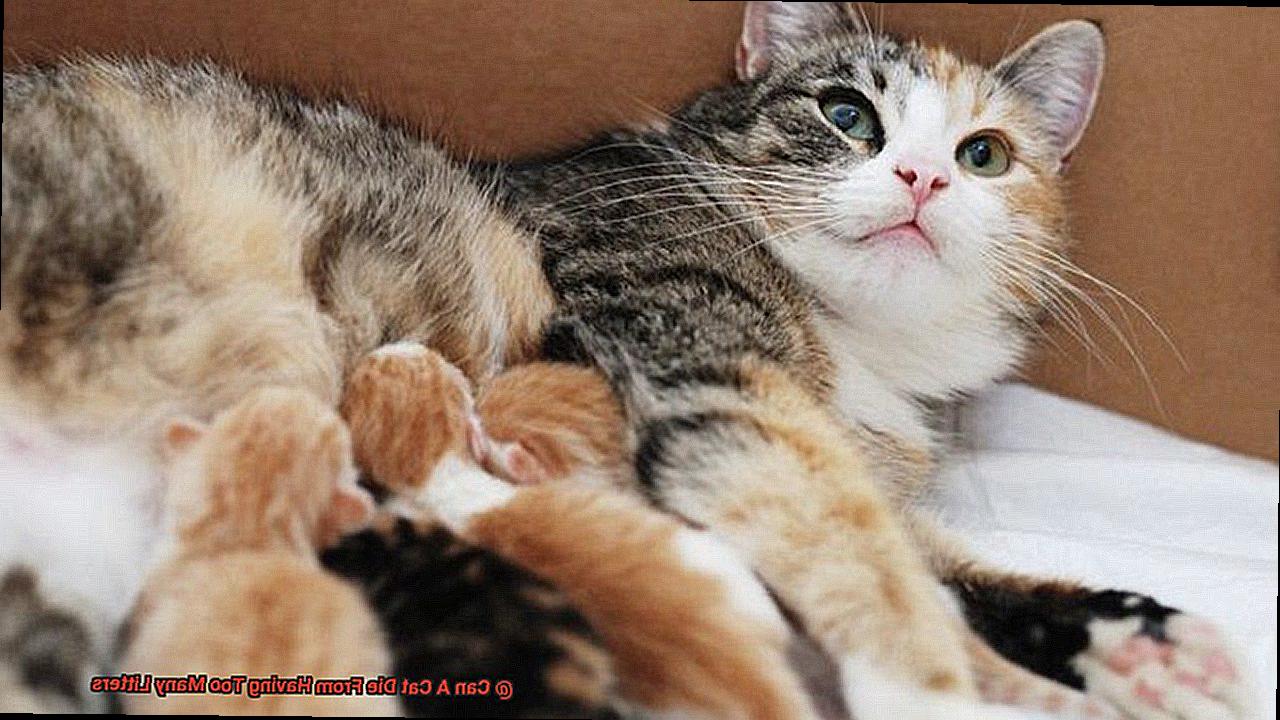
It’s common knowledge that cats are prolific breeders; a female cat can have up to three litters per year, each consisting of 4-6 kittens. While a litter of kittens is undoubtedly adorable, excessive breeding can take a toll on a cat’s health.
Regular pregnancy and deliveries can lead to fatal health issues. So, can a cat die from having too many litters?
In this article, we’ll delve into the various health problems that arise from overbreeding and how to prevent them. We’ll also explore the dangers of leaving your cat unspayed or unneutered and the benefits of getting them spayed or neutered by a vet.
Whether you’re already a cat owner or planning to adopt soon, this guide will help you keep your feline friend happy and healthy for years to come.
How Many Litters Can a Cat Have in a Year?

While felines are renowned for their reproductive prowess, frequent breeding can have severe consequences, including death.
A cat’s gestation period lasts around 63-65 days, and they can go into heat as early as four months old. However, it is not recommended for cats to have more than three litters in a year.
This is because repeated pregnancies can lead to serious health issues such as uterine infections, complications during delivery, and depletion of essential nutrients and energy necessary for good health. Imagine a garden hose that hasn’t been used in months and is clogged with dirt and rubble.
This is similar to what happens when a cat’s uterus is full of litters in rapid succession. This can cause a variety of health issues, such as uterine infections, also known as pyometra.
Pyometra is a severe bacterial disease that affects the uterus and can be lethal if left untreated. Mammary gland tumors are another health issue that can result from having too many litters.
These tumors are usually malignant, and if not detected early, can spread to other areas of the body like a ticking time bomb set to explode. In addition to these health issues, having too many litters can lead to hunger and dehydration in cats.
To help their growing kittens, cats need extra nutrients and water during pregnancy and breastfeeding. If they are breastfeeding often, their bodies may not have enough time to replenish these essential nutrients properly.
Pet owners should take responsibility and ensure their cats are spayed or neutered to prevent unwanted litters and reduce the risk of health complications associated with excessive breeding. Prevention is always better than cure, as the saying goes.
Keeping track of your cat’s breeding habits and ensuring they are spayed or neutered will help protect your furry friend’s health and minimize any potential risks associated with frequent breeding.
How Many Litters Can a Cat Have in Her Lifetime?
Well, hold on to your whiskers because the answer may surprise you.
According to the American Society for the Prevention of Cruelty to Animals (ASPCA), cats can have up to three litters per year, with an average litter size of four kittens. That means a single cat can potentially produce up to 60 kittens in just five years.
However, it’s not all sunshine and catnip. Allowing a cat to have multiple litters over her lifetime can result in serious health issues.

Just like humans, pregnancy and childbirth take a toll on a cat’s body, leading to various complications such as uterine infections, hemorrhages, and even death. As responsible pet owners, we need to prioritize our furry friends’ wellbeing by taking preventative measures such as spaying or neutering.
The ASPCA recommends that cats be spayed or neutered before they reach six months of age to avoid unnecessary litters and potential health risks associated with repeated pregnancies. Not only does this help control the population of homeless cats, but it also ensures that your own feline companion stays healthy and happy for years to come.
How Soon Can a Cat Get Pregnant After Having Kittens?
Cats are known for their unique reproductive physiology – they are induced ovulators, which means they only ovulate after mating.
This means that it is possible for a female cat to become pregnant within days after giving birth to a litter of kittens. However, as a responsible pet owner, it is recommended to wait at least three weeks before allowing your cat to mate again.
Why wait, you ask? This waiting period allows the mother cat to recover from giving birth and dedicate her attention to caring for her litter.
It also minimizes the risk of complications such as smaller litter sizes and weaker kittens. Additionally, if the mother cat becomes pregnant too soon after giving birth, it can lead to health problems for both the mother and her kittens.
During pregnancy and lactation, cats require special care and nutrition to ensure their health and well-being. Providing a high-quality diet and access to clean water is crucial for both the mother cat and her kittens.
Regular veterinary check-ups are also recommended to monitor their health. In conclusion, while cats can become pregnant soon after giving birth, it is essential to wait at least three weeks before allowing them to mate.
This waiting period allows the mother cat to recover, care for her kittens, and minimize potential health risks.
What Age Can a Cat Have Kittens?
This means that a female cat, also known as a queen, can theoretically have kittens at a very young age.
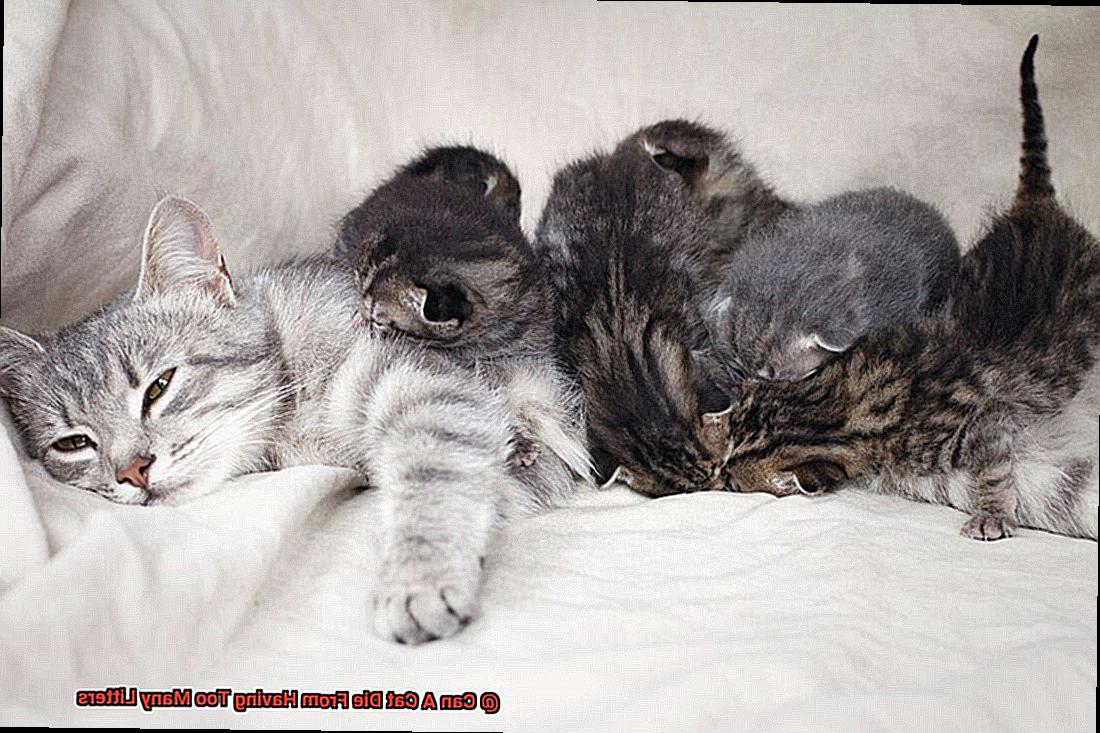
However, it is recommended that cats wait until they are at least 6-8 months old before becoming pregnant. Just like humans, cats need time to grow and develop before they are ready for parenthood.
It’s important to note that not all cats are the same when it comes to reproduction. Some breeds may mature faster or slower than others, and some may have health issues that affect their ability to conceive or carry a litter.
That’s why it’s always best to consult with a veterinarian to ensure that your cat is healthy enough to have kittens. While female cats can reproduce throughout their entire lives, as they age, their fertility levels may decrease and the risk of complications during pregnancy and birth may increase.
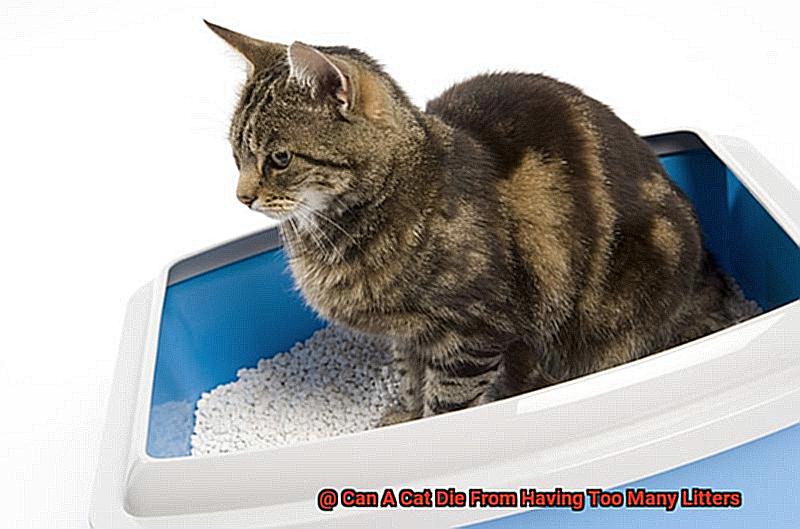
That’s why experts recommend that cats have their first litter before the age of 5 and do not have more than 3 litters in their lifetime. But did you know that spaying and neutering your cat can prevent unwanted litters and provide health benefits for your pet?
Spaying a female cat before her first heat cycle can greatly reduce her risk of developing certain types of cancer and can also prevent behavioral issues associated with mating behaviors. Neutering male cats can reduce the risk of certain cancers while still preventing roaming habits and aggressive tendencies.
And just like athletes need recovery time between races to be at their best, mother cats also need some downtime between litters to ensure their own wellbeing and the wellbeing of their kittens.
Health Complications From Having Too Many Litters
While cats are known for their ability to reproduce, excessive breeding can have serious consequences for your cat’s health.
Here, we’ll take a closer look at the health complications that can arise from having too many litters, including reproductive issues, metabolic disorders, and infections. Let’s start by defining what we mean by “too many litters.”
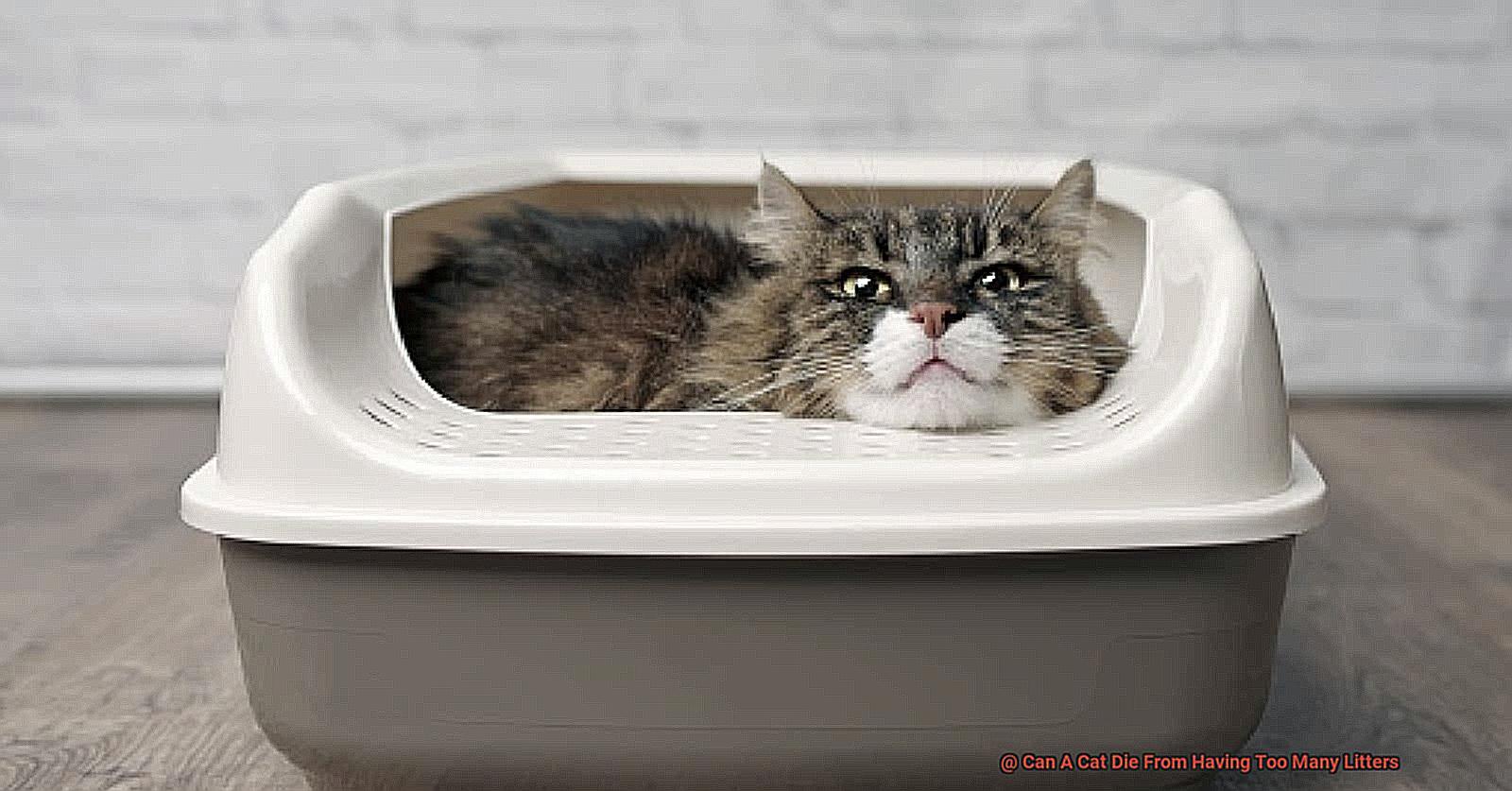
While there is no universal standard for how many litters a cat should have in her lifetime, most veterinarians and animal welfare organizations recommend spaying or neutering cats before they reach sexual maturity, typically around 6 months of age.
Not only does this prevent unwanted litters that could end up in shelters or on the streets, but it also reduces the risk of various health problems that can result from prolonged or frequent heat cycles and pregnancies.
One of the most common health complications from having too many litters is uterine infections, also known as pyometra. This condition occurs when bacteria enter the uterus during or after delivery, causing inflammation and pus accumulation.
Pyometra can be life-threatening if not treated promptly as it can lead to sepsis and organ failure. Signs of pyometra include lethargy, vomiting, drinking more water than usual, and a distended abdomen.
Emergency surgery to remove the infected uterus and ovaries may be necessary for cats with pyometra, which can be expensive. Another potential consequence of excessive breeding is mammary tumors – malignant or benign growths in the breast tissue.
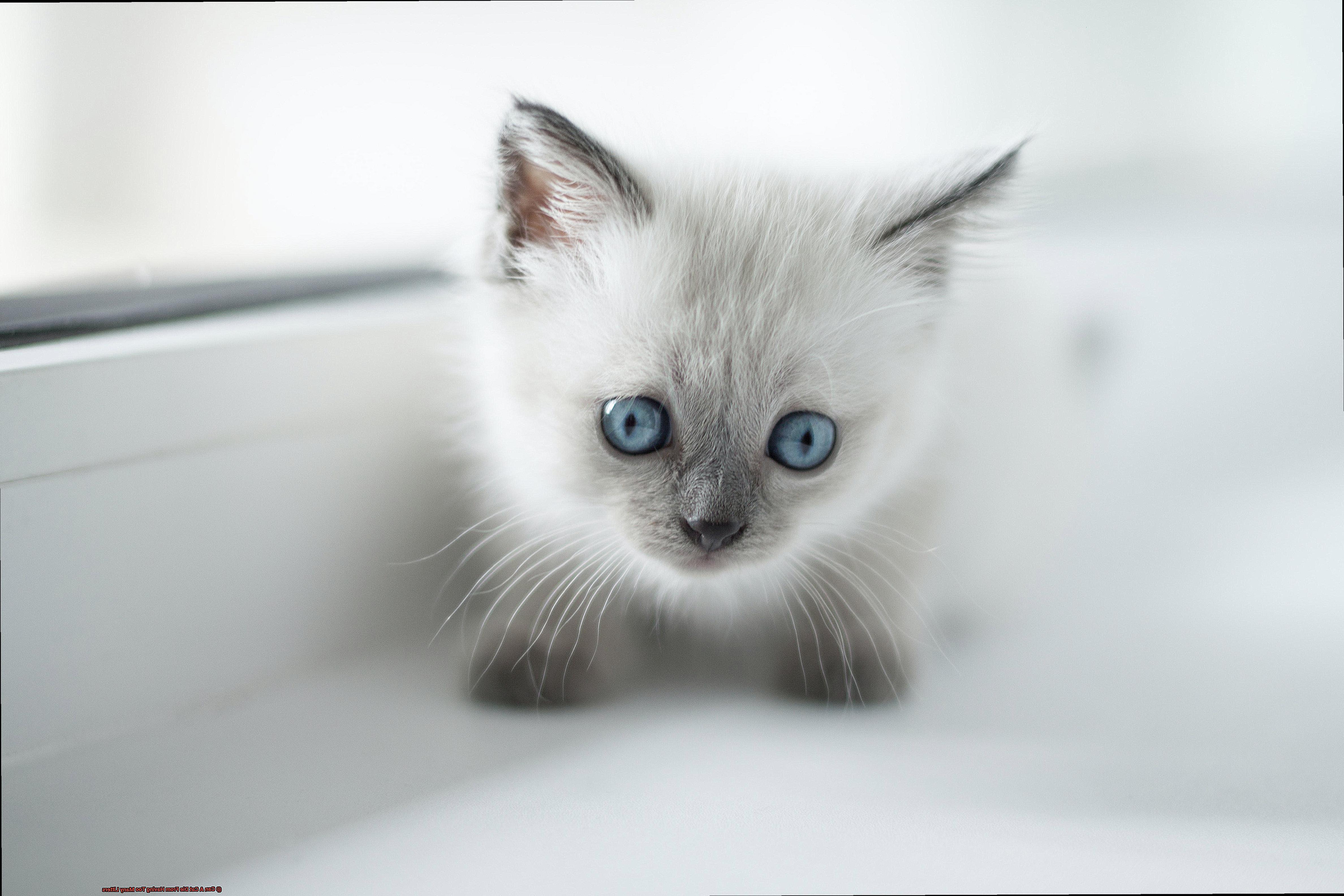
Female cats that are spayed before their first heat cycle have a significantly lower risk of developing mammary tumors than those that go through multiple heat cycles and pregnancies.
Early detection is crucial since mammary tumors can resemble harmless cysts or nodules at first but can grow larger and invade nearby tissues or lymph nodes, causing pain, bleeding, ulceration, and even metastasis to other organs.
Moreover, cats that have too many litters may develop metabolic issues such as obesity due to repeated pregnancies and breastfeeding. Joint pain, diabetes, and heart disease can all be linked to this condition.
peLNtnwqBVE” >
Malnutrition and Dehydration Due to Too Many Litters
You want to ensure that your furry friend stays healthy and happy.
However, cats with too many litters can develop malnutrition and dehydration, which can have serious consequences if left untreated. During pregnancy, cats require more food and water than usual to support healthy kitten development.
Without sufficient nutrition and hydration, the mother’s health can be severely affected. Furthermore, if a cat has multiple litters in quick succession, her body may struggle to replenish the lost nutrients during pregnancy and lactation.
This can result in weight loss, weakness, and lethargy. Sadly, malnutrition and dehydration due to too many litters can lead to severe health complications such as kidney failure, liver disease, or even death.
As responsible cat owners, it is vital to monitor your pet’s food and water intake during pregnancy and provide them with a balanced diet that meets their nutritional needs. It is also essential to give your cat a break of at least six months after giving birth before breeding again.
This time allows the mother to recover from the physical stress of pregnancy and lactation, regain her strength, and prevent malnutrition and dehydration.
Also Read: Can Cats Die From Stress? – 21Cats.org
Conclusion
In conclusion, while cats are known to be prolific breeders, overbreeding can have serious consequences on their health.
Repeated litters can lead to a range of health problems, including uterine infections, mammary tumors, metabolic disorders, as well as hunger and dehydration. Ignoring these issues could result in organ damage or even death.
To prioritize your cat’s physical wellbeing, it is essential to control their reproductive cycle. This involves spaying or neutering them before they reach sexual maturity to reduce the risk of frequent breeding and eliminate unwanted litters.
As responsible pet owners, it is crucial to track your cat’s diet and water intake during pregnancy and provide them with a balanced diet that meets their nutritional needs. Additionally, it’s important to give your cat a six-month break after giving birth before re-homing them.
By taking preventative measures such as spaying or neutering and providing appropriate care during pregnancy and lactation periods, you will ensure that your feline friend stays healthy and happy for years to come.







